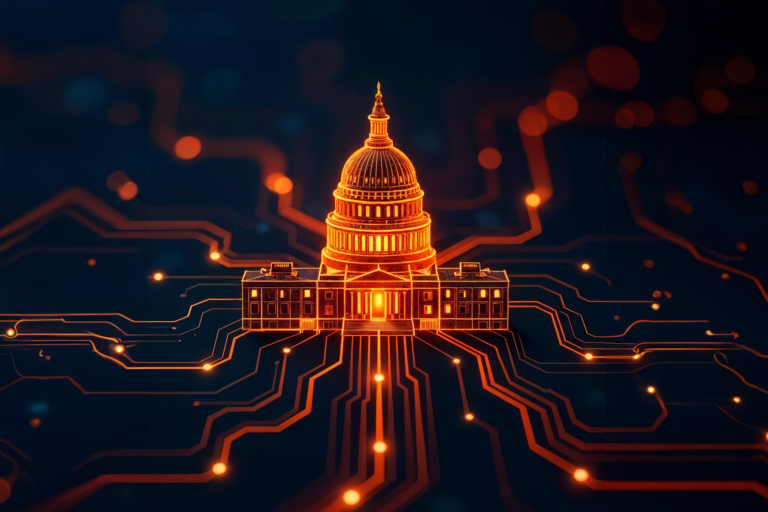The number of rules and regulations and their increasing complexity presents organizations with several challenges. The good news: advancements in compliance technologies have the potential to revolutionize the way regulations are understood, implemented, and complied with. Machine-Readable Regulations (MRR) have proven to be a game changer in the world of RegTech.
They leverage the power of automation and can offer organizations numerous compliance benefits. This blog article will explore the world of Machine-Readable Regulations, show you the key benefits of MRR and take a look at the integration of MRR and norm engineering. We will also present a couple of real-world examples of MRR in action.
What are Machine-Readable Regulations?
Machine-Readable Regulations are the translation of regulatory text into a format that can be easily read, understood, and processed by computer systems (algorithms, software applications). Generating Machine-Readable Regulations involves transforming regulatory documents into standardized formats and using structured data elements in such a way that no semantic meaning is lost. MRR are all about structuring a certain domain in order to make it more predictable and achieve more scalability. They identify elements of a legal standard and make them explicit, allowing you to conceptualize these elements.
The benefits of MRR
Utilizing Machine-Readable Regulations has several benefits. Let’s take a look at the most important ones.
1. Saving time and money
MRR contribute to improved access and transparency, allowing you to save time and money (fewer working hours are spent on repetitive tasks that can be automated) in navigating and retrieving information about relevant laws and rules. Machine-Readable Regulations can be processed and analyzed more quickly and accurately by users, speeding up certain essential tasks, such as legal interpretation and compliance checks.
2. Proactive monitoring of regulations
MRR enable organizations to proactively monitor regulatory changes and quickly adjust their compliance strategies and management to the latest regulations. The result? Fewer errors and rule violations and more accuracy, flexibility and consistency. There are more and better opportunities to timely catch up with regulatory changes.
3. Cross-border compliance
In today’s globalized world, more and more companies have an international scope and operate in multiple jurisdictions. Each of these jurisdictions has its own set of customs, laws and regulations. MRR allow organizations to quickly identify and comply with the relevant regulations in each jurisdiction, minimizing the risk of non-compliance, fines and reputation damage.
4. Improving reporting capabilities
Machine-Readable Regulations offer plentiful opportunities to automate the collection and thorough analysis of regulatory data. Generating more accurate and comprehensive reports becomes easier than ever, leading to fewer compliance failures and greater overall transparency.
5. Gaining a competitive advantage
Leveraging RegTech solutions enabled with Machine-Readable Regulations gives businesses the opportunity to gain a competitive advantage. Enhanced compliance and reporting capabilities demonstrate commitment to regulatory adherence, bolstering trust among stakeholders, investors, and customers.
6. Bridging the gap between lawmaking and implementation
Currently, there is a significant gap between lawmaking and implementation, necessitating extensive interpretation by analysts. However, if lawmakers embed interpretation into legislation from the outset, the need for subsequent analysis and transformation is greatly reduced. Machine-Readable Regulations enable the identification of key elements and their definitions, streamlining the process and facilitating easier translation into implementations.
How MRR integrate with norm engineering
Machine-Readable Regulations are at the centre of norm engineering, which is the translation of legal texts into practical specifications or directly executable models. Norm engineering identifies decisions, norms, and evaluation grounds, essentially turning legal grammar into tangible knowledge models (often AI-powered) that aim to capture facts with clarity.
Machine-Readable Regulations play the role of enablers when it comes to applying norm engineering. They provide the recognizable and standardized format that you need to create and manage the models that facilitate norm engineering. The integration of MRR and norm engineering allows you to convert rules into data, facilitating more robust analysis and querying capabilities.

Real-world examples of Machine-Readable Regulations
So far, we have mainly dug into the subject of MRR from a theoretical viewpoint. But how does it work in the real world? Let’s take a look at a couple of striking examples of MRR in action.
- Optical character recognition (OCR) is used to enable machines to read information available to humans. Prime examples are chemical, electrical, mechanical, optical and thermodynamic data.
- MRR can be utilized to structure computerized library catalogs and library management software according to industry-wide standards needed to freely share bibliographic information between different computers.
- Machine-readable dictionaries have an electronic form that can be loaded in a database and can be queried via application software. You can create single language explanatory dictionaries or multi-language dictionaries to support translations between two or more languages. MRR also allows you to create a combination of the two.
- Machine-readable passports encode the data on the identity page in optical character recognition format, offering better protection against identity theft.
- Digital machine-readable regulation libraries provide a centralized, easily accessible location for all regulations and laws that apply to an institution. They can be searched, analyzed, and understood by governance, risk and compliance users within the institution.
Challenges and considerations
Despite the many significant benefits, implementing machine-readable regulations also comes with some challenges.
Creating a unified regulatory framework
To fully harness the power and potential of MRR, regulators worldwide need to establish standardized frameworks for structuring and formatting regulatory text. This consistent approach is sometimes lacking in real-world business environments.
Tradition and ambiguity
The lawmaking profession often tends to favor traditional approaches and incorporates ambiguous terms to allow for interpretation in various circumstances. This can make it challenging to use Machine-Readable Regulations to their full effect.
Understanding the spirit of the law
RegTech solutions must have a profound understanding of the spirit and underlying intent of a law to achieve the desired results and reap their potential benefits. Advanced natural language processing and contextual analysis that goes beyond mere keyword matching can achieve this.
Are you ready to unleash the revolutionary potential of MRR?
Machine-Readable Regulations can revolutionize the way businesses navigate the regulatory landscape. They can save you time and money and make compliance management workflows more effective and less error-prone, assuring that you always adhere to general, industry-specific, national and international regulations.
The Be Informed platform can help you bridge the gap between compliance and technology, allowing you to unleash the full potential of MRR.
Would you like to know more about the Be Informed platform and how it acts as an agile accelerator for digital development? Then don’t hesitate to contact us at +31 (0) 55 368 1420 or contact@beinformed.com.









